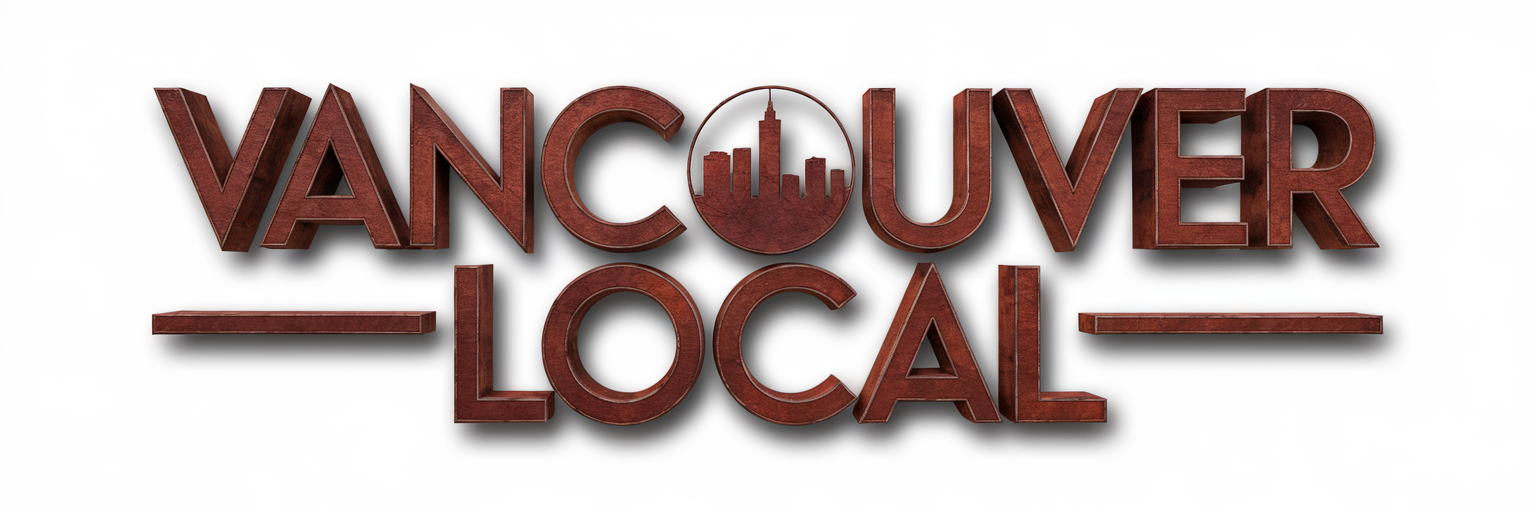Listen to the Article

What Is the Difference Between a Stair Lift and a Chair Lift?
You might not realize that stair lifts and chair lifts serve quite different purposes, despite their similar names. While both aim to enhance mobility, their designs and functionalities cater to specific needs within your home or public spaces. Understanding these distinctions can significantly impact your choice, especially when considering safety and comfort. What factors should you weigh when deciding which solution fits best in your situation?
Understanding Stair Lifts
Understanding stair lifts is essential for anyone considering mobility solutions for their home. These devices provide a safe and efficient way for individuals with limited mobility to navigate stairs.
Stair lifts are typically installed along the staircase, featuring a chair or platform that travels along a track. You'll find that they come in various models, designed to accommodate straight or curved staircases, ensuring a fit for your specific home layout. For instance, the Elan Straight Indoor Stair Lift is specifically designed for straight indoor staircases, making it an excellent choice for homes with that layout.
When you opt for a stair lift, it's important to assess the weight capacity, safety features, and ease of use. Most models include seat belts, swivel seats, and remote controls for added convenience and security.
Additionally, stair lifts are powered by batteries, ensuring they operate even during a power outage.
Installing a stair lift can significantly enhance your independence and mobility, allowing you to access different levels of your home without assistance. With professional installation, you can feel confident that the device is securely fitted and functions optimally.
Ultimately, choosing the right stair lift can profoundly improve your daily life, granting you the freedom to move safely and comfortably throughout your living space.
Understanding Chair Lifts
Chair lifts serve to enhance mobility, providing a safe and convenient way for individuals to navigate their homes.
They're part of a broader range of accessible solutions offered by companies like Bearson Lifts, which focus on enhancing maneuverability and safety in residential settings.
Understanding the installation process and key features of chair lifts can help you make informed decisions about your needs.
Free consultations available can guide you in selecting the right solution for your situation.
Let's explore these aspects to ensure you find the right solution for your situation.
Purpose of Chair Lifts
A chair lift serves a vital purpose in enhancing mobility for individuals with limited stair-climbing ability. It offers a safe and efficient means of navigating stairs without the physical strain that traditional stair climbing entails. By providing a comfortable seating option that glides along a track, chair lifts enable you to move effortlessly from one level of your home to another.
These devices are especially beneficial for seniors or individuals with disabilities, as they reduce the risk of falls and injuries associated with stair use. They also promote independence, allowing users to maintain their daily routines without relying heavily on caregivers or family members.
Moreover, chair lifts can be installed in various settings, including residential homes and public buildings, catering to diverse mobility needs. They're designed to accommodate different stair configurations, ensuring accessibility for everyone.
In essence, a chair lift isn't just a mobility aid; it's a tool that fosters dignity and freedom. By choosing to install a chair lift, you're making a significant investment in your quality of life and overall safety.
Installation Process Overview
The installation process of a chair lift is crucial for ensuring safety and efficiency in mobility assistance.
First, a professional will assess your home to determine the best location for the chair lift. This involves measuring the staircase and evaluating the layout to ensure a secure fit. You'll want to discuss your specific needs and preferences during this evaluation, as this can influence the choice of model and installation method.
Next, the technician will gather the necessary tools and equipment. Installation typically involves mounting tracks along the staircase, which securely guide the chair.
It's essential that these tracks are level and properly anchored to support the lift's weight.
Once the tracks are in place, the chair is mounted and connected to the power supply. During this phase, the technician will conduct thorough tests to ensure everything functions correctly.
They'll walk you through the operation of the chair lift, addressing any questions you might have.
Key Features Explained
Understanding the key features of chair lifts can significantly enhance your decision-making when selecting a mobility solution. Chair lifts are designed to provide safe and comfortable transportation, primarily for individuals with mobility challenges.
One of the most important features is the seat design. Most chair lifts come with a cushioned seat and backrest, ensuring a comfortable ride.
Safety features also play a crucial role. Look for models with seat belts, swivel seats, and armrests to prevent falls and enhance stability. Many chair lifts have adjustable speed settings, allowing you to control the pace of your descent or ascent, which can further enhance safety and comfort.
Another key feature is the folding mechanism. Most chair lifts can fold up when not in use, minimizing space and providing easy access for others.
Additionally, power sources vary; some models operate on batteries, ensuring functionality during power outages.
Lastly, consider the weight capacity. Each chair lift has a specific limit, and it's essential to choose one that accommodates your needs.
Key Functional Differences
When comparing stair lifts and chair lifts, it's essential to recognize their distinct functionalities. While both aids aim to enhance mobility and independence, they serve different purposes and environments.
- Primary Use: Stair lifts are designed specifically for navigating staircases, while chair lifts can be used for various types of seating.
- Design: Stair lifts feature a track system that follows the stairway's contours, ensuring safe ascension and descension. Chair lifts, on the other hand, typically resemble standard chairs equipped with lifting mechanisms.
- Safety Features: Stair lifts often come with safety sensors that prevent operation if obstacles are detected, while chair lifts may include safety straps or harnesses to secure the user.
- User Experience: With stair lifts, users remain seated as they move between floors. Chair lifts allow users to sit down or stand up, making them versatile for different situations.
Understanding these functional differences can help you make an informed decision based on your specific needs.
Whether you're looking to improve accessibility in your home or assist a loved one, recognizing these distinctions ensures you choose the right solution for maintaining independence and safety.
Installation Requirements
When considering the installation of a stair lift or chair lift, you'll need to assess the available space in your home to ensure proper fit and functionality.
Additionally, understanding the electrical requirements is crucial for a safe and efficient installation.
These factors will help you make an informed decision tailored to your needs.
Space Considerations
Installing a stair lift or chair lift requires careful consideration of the available space in your home. Both options have specific space requirements that must be met for safe and effective installation.
It's essential to evaluate your environment to ensure a smooth process.
- Stair Width: Measure the width of your staircase to determine if a stair lift can fit without obstructing walkways.
- Landing Space: Ensure there's adequate space at the top and bottom of the stairs for safe entry and exit.
- Clearances: Check for any obstacles, like railings or furniture, that might interfere with the lift's operation.
- Structural Integrity: Assess whether your staircase can support the installation, particularly for stair lifts that require additional support brackets.
Electrical Needs
Understanding the electrical needs for a stair lift or chair lift installation is crucial to ensure safe and efficient operation. Both systems typically require a dedicated electrical outlet, ideally located near the lift's track or rail.
It's essential to verify that your home's electrical system can support the lift's power requirements, which usually entail a standard 120-volt outlet. Before installation, you should consult with a qualified electrician to assess your existing wiring.
They'll help determine if upgrades are necessary to handle the lift's load safely. Additionally, consider the lift's battery backup feature, which ensures operation during power outages. This means you'll need to ensure the charging system is installed correctly.
When planning your installation, it's also wise to account for the lift's power consumption. While stair lifts and chair lifts are designed to be energy-efficient, understanding their electrical consumption can help you manage your utility costs effectively.
Safety Features Comparison
Safety features are often a top priority when considering mobility solutions like stair lifts and chair lifts. Both options provide essential support, but they each come with distinct safety features designed to protect users.
- Seatbelts: Both stair lifts and chair lifts typically include seatbelts to secure the user during operation.
- Emergency Stop Buttons: These allow users to halt the lift immediately if needed, providing a safety net in case of unexpected circumstances.
- Obstacle Sensors: Many modern models are equipped with sensors that detect obstacles, preventing the lift from operating if something blocks its path.
- Swivel Seats: Chair lifts often feature swivel seats, allowing users to exit safely without twisting their bodies awkwardly.
When choosing between a stair lift and a chair lift, it's crucial to assess these safety features to ensure they meet your specific needs.
Consider the layout of your home, your mobility challenges, and the environment where the lift will be used.
Prioritizing safety can help you feel more confident and secure in your mobility solution, allowing you to maintain independence while minimizing risks.
Cost Considerations
When evaluating mobility solutions like stair lifts and chair lifts, cost is a significant factor that can influence your decision. Both options come with varying price points, and understanding these can help you make an informed choice.
Stair lifts generally range from $3,000 to $5,000, depending on the complexity of your staircase and any additional features you may want. Customizations, such as curved tracks, can increase the cost significantly.
On the other hand, chair lifts are typically less expensive, starting around $2,000 and going up to $4,000, depending on the model and additional features like reclining seats or swivel bases.
Keep in mind that the upfront costs aren't the only financial considerations. Maintenance and potential repairs can add to your long-term expenses. Some companies offer warranty packages that might mitigate these costs, so it's worth investigating.
Ultimately, it's essential to assess your budget and the specific needs of your household. Balancing initial investment with long-term usability will ensure you choose the right mobility solution for your situation.
Space and Design Factors
Choosing the right mobility solution involves careful consideration of space and design factors in your home. Understanding the dimensions and layout of your stairs is crucial for determining whether a stair lift or a chair lift is the better choice for you.
- Stair Width: Ensure your staircase can accommodate the lift without obstructing passage.
- Landing Space: Evaluate available space at the top and bottom of the stairs for secure entry and exit.
- Curved vs. Straight Stairs: Consider if your staircase is straight or has curves, as this affects installation options.
- Aesthetic Integration: Think about how the lift will blend with your home's design and decor.
Both lifts require sufficient room for safe operation and user access. A stair lift typically runs along a rail mounted to the wall or staircase, while a chair lift can be more compact and flexible in installation.
Analyzing these factors can help ensure you select a solution that meets your mobility needs while maintaining your home's functionality and visual appeal. Prioritizing these considerations will lead to a safer, more comfortable living environment.
User Experience and Comfort
After considering the space and design factors, it's important to examine how each lift impacts user experience and comfort.
Stair lifts typically offer a seated experience while ascending or descending stairs. This design can be beneficial for individuals who may struggle with balance or have limited mobility. The chair is often cushioned and contoured, providing a sense of security and ease during the ride. However, some may find the confined space less comfortable, especially on longer journeys.
On the other hand, chair lifts generally refer to seating options, such as lift chairs or recliners, designed for ease of sitting and standing. These are often adjustable, allowing you to find the most comfortable position for your needs. The user experience here can be more personalized, with options for heat and massage features that enhance relaxation.
Both options aim to improve mobility, but your comfort hinges on personal preference and specific needs. You may feel more secure in a stair lift if navigating stairs is a concern, while a chair lift could provide more versatility in your daily routine.
Understanding these nuances can help ensure you choose the right solution for your comfort and well-being.
Choosing the Right Option
Deciding between a stair lift and a chair lift requires careful consideration of your specific mobility needs and living environment.
Both options provide essential support, but they cater to different circumstances. You need to evaluate factors that affect your choice to ensure you select the best solution for your situation.
- Type of Stairs: Consider whether your stairs are straight, curved, or narrow.
- User's Mobility Level: Assess how well you can move independently or if assistance is necessary.
- Space Constraints: Think about the available space for installation and any potential obstructions.
- Cost and Budget: Review your financial situation, as prices can vary significantly.
Frequently Asked Questions
Can Stair Lifts Be Used Outdoors?
Yes, stair lifts can be used outdoors, provided they're specifically designed for such environments. Outdoor models typically feature weather-resistant materials and additional safety features to ensure reliable performance in varying weather conditions.
How Long Do Stair Lift Batteries Last?
Think of stair lift batteries like a reliable friend; they typically last 2 to 5 years, depending on usage and maintenance. Regular checks and timely replacements ensure your stair lift remains dependable and safe for daily use.
Do Chair Lifts Require Professional Installation?
Yes, chair lifts typically require professional installation to ensure safety and proper functionality. Professionals assess your home's layout and make necessary adjustments, giving you peace of mind while maximizing the lift's effectiveness for your needs.
Can Stair Lifts Accommodate Heavy Users?
Yes, many stair lifts can accommodate heavy users. They're designed with various weight capacities, ensuring safety and comfort. Always check the specifications of the model you're considering to find one that suits your needs.
Are There Tax Deductions for Purchasing Lift Systems?
Yes, you might qualify for tax deductions when purchasing lift systems. These deductions can help alleviate financial burdens. Consult a tax professional to explore eligibility and ensure you maximize potential savings related to your purchase.
Conclusion
In navigating the choices between stair lifts and chair lifts, think of them as different tools in a toolbox, each designed for specific tasks. Stair lifts are your go-to for conquering stairs, while chair lifts provide broader mobility support. By considering your unique needs, installation space, and safety features, you can find the right fit that enhances your independence and comfort. Ultimately, selecting the right lift can transform your home into a more accessible and welcoming environment.







